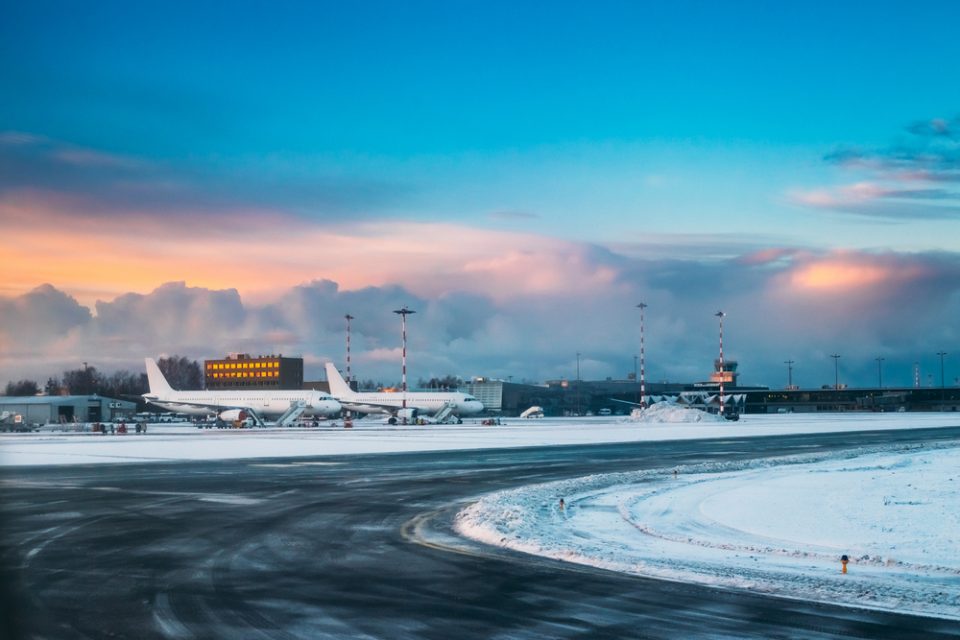
Ample heat. Remote work. TripIt Pro. In the midst of last week’s polar vortex conditions, I named these things as what I was most thankful for. At the start of the week, I hunkered down to avoid wind chill temps of 43 degrees below zero. And when my midweek flight was delayed due to snow, TripIt Pro notified me hours ahead of the airline. Of course, winter isn’t just one week of frigid temps—snow and ice storms wreak havoc on air travel all season long. And when that happens, business travelers are left scrambling to rebook flights, meetings, and more. As you book and manage your travel plans over the coming months, use these six tips to prepare for—and hopefully avoid—winter weather delays.
Fly direct
For starters, try to fly direct as much as possible in the winter. While you don’t always have a say where business travel takes you, if you’re not flying to or from a snowy destination, you can increase your chances of on-time travel if you aren’t stopping somewhere snowy mid-journey.
Avoid the most weather-delayed airports
Sometimes flying direct just isn’t an option, but perhaps you do have a say with regards to your flight path and where you spend a layover. First, if you book a flight with a stop, make sure you plan for a long connection so you don't miss your next flight if the first one is delayed. Second, do your research to avoid airports that typically receive snow and, subsequently, experience weather-related delays. Where should you avoid exactly? According to The Weather Channel, Philadelphia International Airport (PHL), Boston Logan International Airport (BOS), John F. Kennedy International Airport (JFK), Denver International Airport (DEN), Chicago O’Hare International Airport (ORD), Newark Liberty International Airport (EWR), and New York LaGuardia Airport (LGA) all ranked among the top ten most weather-delayed U.S. airports in 2017 because of their susceptibility to snowstorms.
Buy two one-way tickets
So, your proposed business trip avoids the above airports on the way to your destination, but your options for getting home show a layover at O’Hare. Now what? Try searching for two one-way tickets versus the standard round-trip fare. This travel hack will not only provide you with more airline carrier options, it also has the potential to save you money, as well. With more flexibility by way of flight routes, you can plan around those cities notorious for delays.
Go big (to get home)
In TripIt’s 2018 study of what makes for a happy trip, a majority of travelers said they prefer to fly out of alternate airports. However, when it comes to avoiding winter weather delays, travelers should stick with bigger airports. Why? Bigger airports mean more airlines and more flights—a formula that will hopefully increase your chances of getting out if you experience a delay or have to rebook. So, what if your flight does get delayed?
Plan ahead for long security lines
And by plan ahead, I mean sign up for known traveler programs—like TSA PreCheck, Global Entry, or CLEAR—now. When there’s a backlog of passengers in the same (delayed) boat as you, program membership will at least help you skip long security lines at the airport. Plus, TripIt Pro members receive a four month free trial of CLEAR—with a few more months of winter ahead, now’s a great time to start the clock.
Upgrade to TripIt Pro
In addition to CLEAR membership (and a host of other features), TripIt Pro members receive flight alerts about delays and cancellations quickly—sometimes (read: often) even before the airline provides an update. While the app can’t predict when the next winter storm will hit, it will provide you with the most up-to-date information regarding delays, cancellations, and, most urgently, your options for alternate flights. Many a TripIt Pro user have been first in line for booking the next available flight—next polar vortex, that could be you.

